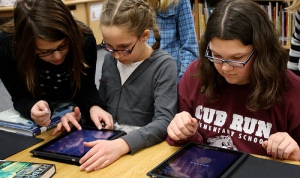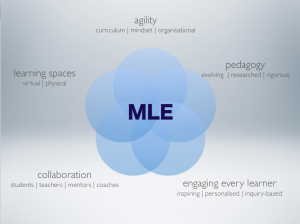 One of the things that teachers spend a lot of time considering is how to keep students motivated and engaged with their learning. This is not as easy as it sounds – just ask any adult volunteer at a kids’ party or a sports club training day! One solution, which many people implement for short-term benefit and exigency, is to use a system of rewards.
One of the things that teachers spend a lot of time considering is how to keep students motivated and engaged with their learning. This is not as easy as it sounds – just ask any adult volunteer at a kids’ party or a sports club training day! One solution, which many people implement for short-term benefit and exigency, is to use a system of rewards.
Short-term solution, kids happy, job done!
But…
Fostering extrinsic rather than intrinsic motivation can often be disastrous in the long run, as these researchers have found out. One famous research project involved an experiment into the “overjustification effect”, in which extrinsic rewards can often have the reverse effect on motivation in the longer term.
The researchers first observed a preschool classroom for baseline observations and found that drawing was one of the most popular activities. They wanted to test intrinsic versus extrinsic rewards, so they put out felt-tipped markers (a big treat) at the art table and told one group of students that if they chose drawing during free play time they would get a certificate with a gold seal on it. A second group was not told about the reward, but after making art they received one. The third group was neither told about the rewards nor received one. After a week or two, the researchers again put out the felt-tipped markers and observed from behind a one-way mirror what activities the children chose to play with on their own.
Children in the reward condition chose to draw much less during a three-hour play period than either of the other two conditions. What happened? The researchers posited that “The certificate replaced the satisfaction of drawing. When there was no more reward, the kids didn’t want to draw. And, interestingly, when kids were being rewarded for their drawings, they produced less creative work.”
This is definitely a complex challenge to overcome, as even the simplest of verbal feedback could be perceived by students as, and become, an extrinsic motivational factor! Sometimes strategies put into play with the best intentions have unexpected outcomes!
* Source: https://ww2.kqed.org/mindshift/2017/03/19/why-even-great-teaching-strategies-can-backfire-and-what-to-do-about-it/
In this web article from Katrina Schwartz at MindShift, students from a selection of schools whose focus was on creating a culture of deep learning and engagement, were asked about what it takes to create a culture of learning that “…fosters creativity, collaboration, trust, the ability to fail, and perhaps most importantly, [a culture] in which students want to participate.”
 They described six key aspects:
They described six key aspects:
- INTEGRATED PROJECTS
- INTEREST-BASED AND RELEVANT
- MAKE IT HANDS-ON
- KNOWING TEACHERS CARE
- LEARNING FROM FAILURE
- EVALUATING WORK
Take a look at the article and see how these students describe the optimal conditions for their own engagement and motivation!






